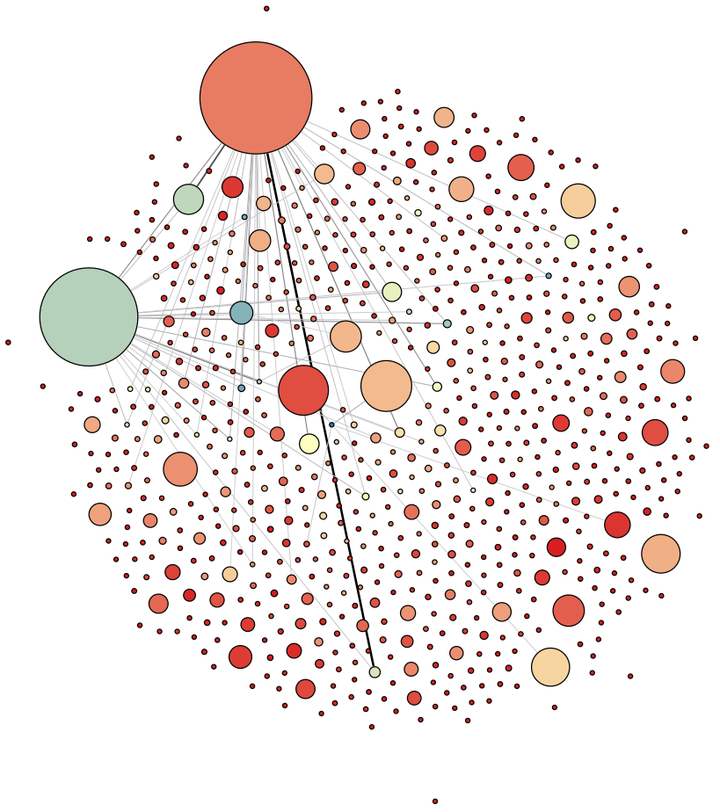Assessing police topological efficiency in a major sting operation on the dark web
 The strong component visualization of the offensive media-sharing network with circular layout. The bigger the node is, the more viewers the corresponding user had to their content. The more active an user is, the closer its node color is to red. Edge weights are mapped to the interaction between two message board users.
The strong component visualization of the offensive media-sharing network with circular layout. The bigger the node is, the more viewers the corresponding user had to their content. The more active an user is, the closer its node color is to red. Edge weights are mapped to the interaction between two message board users.Abstract
The networked nature of criminals using the dark web is poorly understood and infrequently studied, mostly due to a lack of data. Rarer still are studies on the topological effectiveness of police interventions. Between 2014 and 2016, the Brazilian Federal Police raided a child pornography ring acting inside the dark web. With these data, we build a topic-view network and compare network disruption strategies with the real police work. Only 7.4% of the forum users share relevant content, and the topological features of this core differ markedly from other clandestine networks. Approximately 60% of the core users need to be targeted to fully break the network connectivity, while the real effect of the arrests was similar to random failure. Despite this topological robustness, the overall “viewership network” was still well disrupted by the arrests, because only 10 users contributed to almost 1/3 of the total post views and 8 of these were apprehended. Moreover, the users who were arrested provided a total of 60% of the viewed content. These results indicate that for similar online systems, aiming at the users that concentrate the views may lead to more efficient police interventions than focusing on the overall connectivity.
Find more information at https://doi.org/10.1038/s41598-019-56704-4